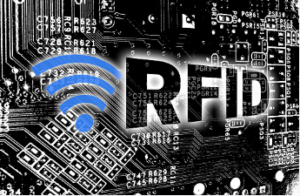RFID tags are small electronic devices that track and read data about a product or item. These tags can be used in many applications, from inventory tracking to supply chain management.
 Unlike barcodes and QR codes, RFID tags don’t have a physical chip and instead use radio waves to transmit information. Depending on their frequency and power supply, they can be passive, active or battery-assistive passive (BAP).
Unlike barcodes and QR codes, RFID tags don’t have a physical chip and instead use radio waves to transmit information. Depending on their frequency and power supply, they can be passive, active or battery-assistive passive (BAP).
They are small
Radiofrequency identification, or RFID for short, is a technology that uses radio waves to communicate with a chip embedded in a product. It tracks and identifies products, items, equipment, inventory, people, etc.
RFID tags Australia are small and easy to read, making them ideal for various applications. They are also durable and can last years without fading or losing functionality.
They come in different forms, such as inlays, hard tags, and stickers. In addition, some tags come with built-in cable ties, tamper-proof features, keyfobs, and more.
Currently, there are three types of RFID tags: passive, semi-passive, and active. Passive tags are small and easy to read but have a relatively short range. These tags are commonly used for goods and package tracking because they don’t need to be within the reader’s line of sight.
The smallest RFID tag on the market today is called the Hitachi Mu-chip, which measures 0.4 x 0.4 millimetres. It is 60x smaller than the AK Tag and so tiny that it is barely noticeable next to human hair.
This newest chip version has a 128-bit ROM with a unique 38-digit number. The tag can be programmed with information that can help track objects and people and is compatible with various devices.
Researchers have found that these chips effectively identify people and track their movements. For example, they are used in timing marathons and races to provide participants with helpful information during the event.
They are also great for tracking pets and can even be programmed to be able to detect diseases such as AIDS.
Another type of RFID tag is called an active tag, which can be used for applications such as cargo tracking, toll payment systems, and more. These tags can be powered by a battery and send out an RF ‘chirp’ whenever they want to communicate with readers in the area. These chirps are usually sent out every few seconds and can be detected hundreds of feet away.
They are durable
The RFID tags Australia in grocery stores and clothing retailers are designed to endure various conditions. These include vibration, impact and pressure. The tags must also be durable enough to withstand high temperatures.
These types of tags can be made of various materials, including metal. Some are also designed to survive extreme temperatures, making them ideal for industrial environments.
They come in several shapes and sizes, ranging from small and compact to more extensive and bulky. Some even have an integrated heat sink to protect them from high-temperature exposure.
They are easy to read
RFID tags are tiny microchips that can store a wealth of data about an item. They can be used for everything from tracking inventory and assets to providing a more personal experience to consumers.
The frequency of the radio waves used to communicate with the reader and the size of the antenna determine how far the reader can read a tag. UHF and HF RFID tags, which use frequencies up to 800-900 MHz, have longer ranges than other types of RFID and offer faster read rates.
RFID is an effective way to automate processes and drive efficiencies in the supply chain. It can also help companies identify any problems that may arise, allowing them to take immediate action to solve them. It helps reduce costs and increase the quality of the products.
They are affordable
RFID tags are a cost-effective solution to various issues plaguing retail businesses. They allow retailers to track their inventory at an individual item level and prevent items from getting lost or damaged while in storage. In addition, these tags can be used to identify shipments of products, which is another way retailers can cut costs.
There are several RFID tags, each with specific advantages and disadvantages. Choosing the correct kind of tag depends on your application and budget.
Passive RFID tags are highly economical, costing about 20 cents per tag. As a result, these tags are popular in supply chain management, file management, and access control applications.
Active RFID tags are more expensive than passive tags but have a more extended reading range. They can also send signals in real time, which helps track assets that move fast.
They are also more durable and can last a long time. It makes them ideal for use on equipment in the construction and automobile industries and medical devices.
These tags are affordable because they are less complicated to manufacture than their conventional counterparts. They can also be integrated into different devices, which helps them become more widespread.
They are also easy to read and can be scanned with a smartphone or handheld reader. It can make them an excellent option for warehouses and other storage facilities, allowing employees to track inventory in real time.
While there are various options for using RFID technology, the most crucial factor is that it should be adequate for your specific needs. If you’re unsure whether an RFID system is right for your business, it’s best to talk to a label converter who can help you decide on the best solution for your needs.